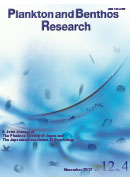Volume 12, Issue 4
Displaying 1-8 of 8 articles from this issue
- |<
- <
- 1
- >
- >|
Original Papers
-
2017 Volume 12 Issue 4 Pages 201-211
Published: November 29, 2017
Released on J-STAGE: December 26, 2017
Download PDF (830K) -
2017 Volume 12 Issue 4 Pages 212-223
Published: November 29, 2017
Released on J-STAGE: December 26, 2017
Download PDF (1104K) -
2017 Volume 12 Issue 4 Pages 224-237
Published: November 29, 2017
Released on J-STAGE: December 26, 2017
Download PDF (1384K) -
2017 Volume 12 Issue 4 Pages 238-247
Published: November 29, 2017
Released on J-STAGE: December 26, 2017
Download PDF (793K) -
2017 Volume 12 Issue 4 Pages 248-258
Published: November 29, 2017
Released on J-STAGE: December 26, 2017
Download PDF (1135K) -
2017 Volume 12 Issue 4 Pages 259-265
Published: November 29, 2017
Released on J-STAGE: December 26, 2017
Download PDF (778K) -
2017 Volume 12 Issue 4 Pages 266-284
Published: November 29, 2017
Released on J-STAGE: December 26, 2017
Download PDF (2083K)
Erratum
-
2017 Volume 12 Issue 4 Pages 285
Published: November 29, 2017
Released on J-STAGE: December 26, 2017
Download PDF (165K)
- |<
- <
- 1
- >
- >|
